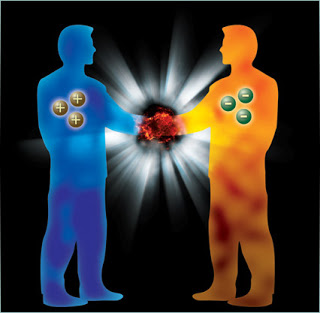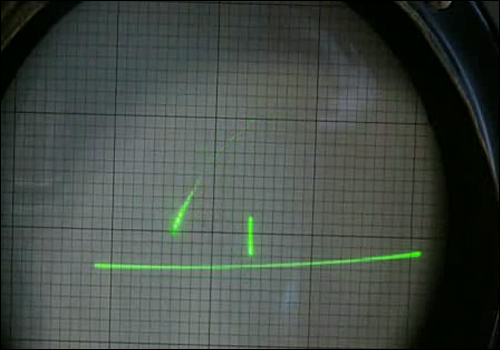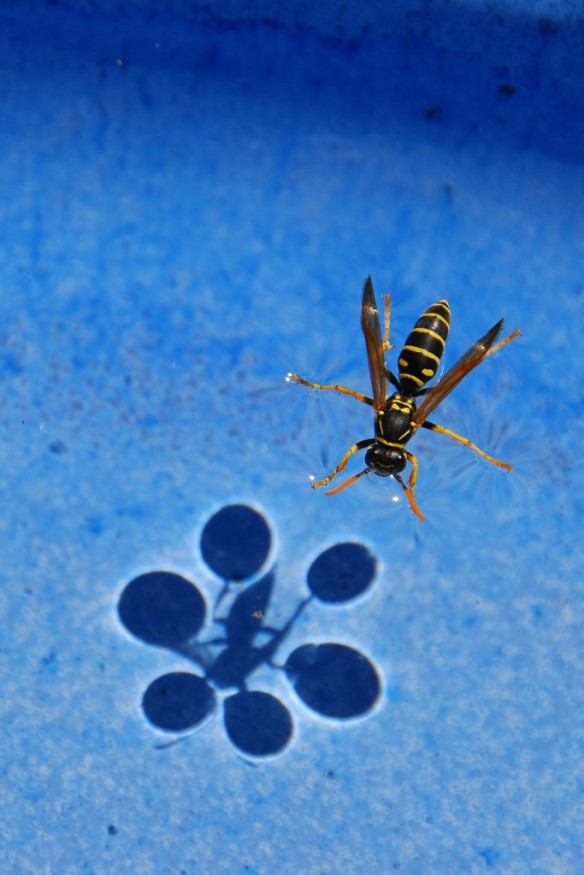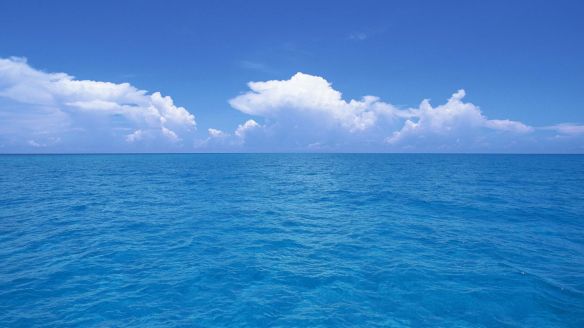Friends, I am back. It’s almost two years break and I hope I’ll become as regular as I used to be here. Today I’ll talk about mathematics and its DIY kind of application. This is related to something that I demonstrated in this year’s Science Day Program in IMSc, Chennai. This post is the part I of it.
Do you know how many times you can fold a paper into half? Using any of your daily sort of papers, you cannot fold beyond 7, i.e. mathematically . Just give a try right now if you never have realized it. OK, once you have tried, you might have felt that it’s due to the limitation of human muscle that doesn’t allow you press harder and hence you actually need something else. What else? Maybe a powerful hydraulic press? Well, let’s check out this video.
Watched it? So you see that the paper breaks down like a biscuit after the successful 7-th fold! What could be the reason? Your physics mind may say that the paper is made out of some material which is not very much ductile, doesn’t allow it to withstand high pressure of a hydraulic press, and hence breaks down.
Surprisingly the answer contains more maths than physics. Think it this way : Suppose you actually succeeded in folding a piece of paper into half 42 times. Now for each folding the size of the paper reduces to half and the thickness of the paper gets doubled. So the thickness vs number of folds plot should look something like this :
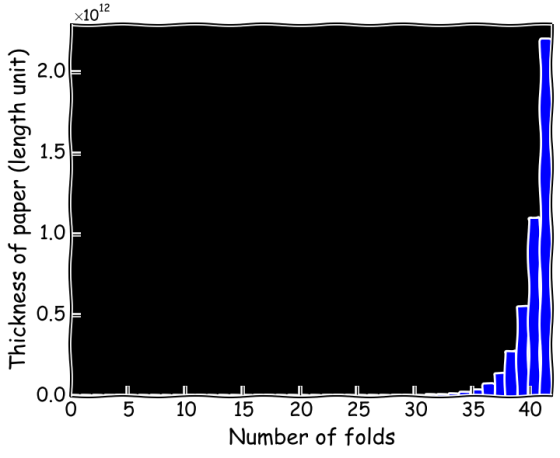
You can see that the thickness () grows exponentially with number of folds (
) on the paper :
and for an unfolded paper with 1 mm thickness 42 folds will give rise to finally a thickness of
mm
km which is nearly equal to 4,39,804 km. Now the moon’s average distance from earth is 3,85,000 km. This means, if you could indeed cross the number of 7 limit and fold 42, you would have built a paper made road to reach the moon! Whoa!
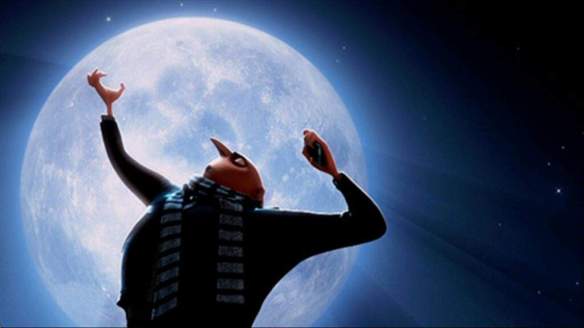
Now you’re close to the actual catch, i.e. you know that such thing is not possible. Every time you fold a paper, you double its thickness definitely, but you lose its area by half at the same time, i.e. an A4 size paper of length 297 mm will end up mm = 6.75 \times 10^{-14}$ m, which is far smaller than size of any atom (typically
m). So practically you’ll no longer have a trace of the paper you began with!
However, folding for more than 7 times (say 8) may not lead to that much disaster if you manage to do it alternatively. For simplicity say you have a paper of 300 mm 200 mm size paper. Now you set up a rule: Fold always along the longest side of the paper. So the paper size will change in the following way :
Fold 1 : 150 mm 200 mm
Fold 2 : 150 mm
100 mm
Fold 3: 75 mm
100 mm
Fold 4: 75 mm
50 mm
Fold 5: 37.5 mm
50 mm
Fold 6: 37.5 mm
25 mm
Fold 7: 18.75 mm
25 mm
Fold 8: 18.75 mm
12.5 mm
. However, this doesn’t work as you’ve already seen in the video above.
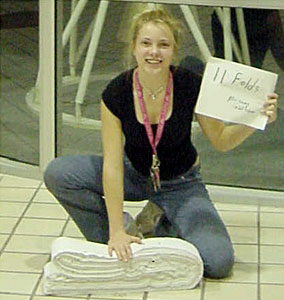
In 2001 Britney Galivan, who was doing her junior high school at that time, took up this challenge and made a record of folding a long toilet paper 11 times. In the next year she made it to 12. And 12 is more or less the highest record (though there’s a claim of 13 folds with a long taped paper). However, what’s the most important contribution of her is that she found exact mathematical relations between the thickness and number of folds. For folding in the single direction the formula becomes
(1)
and for folding in alternative direction it is
(2)
where or
are the minimum length or width of a rectangular or square paper,
is the thickness of the paper, and
is the number of folds of the paper. Surprisingly, Britney didn’t earn that much fame for her formulas although no one has challenged the validity of them. In fact, Mathworld mentions her formula in its topic page on Folding and Wikipedia mentions that she was a keynote speaker in 2006’s National Council of Teachers of Mathematics convention. It’s also said that she chased the folding craze in order to earn extra credit in maths in her school. Most of Britney’s achievements and follow-ups have been archived in Historical Society of Pomona Valley, California’s webpage. The same society has published a booklet titled “Folding Paper in Half 12 Times: The story of an impossible challenge solved at the Historical Society office” , which I have not checked.
The derivation of Eq. (1) is available in Richard Condo’s (University of Michigan) page, in Gaurish Korpal’s article in At Right Angles, and some details in this blog post. The key thing considered in this derivation is that folding a paper of thickness into its half needs the paper to bend with arch
before forming a crease. This gives rise to the
-factor in the equation.
in Eq. (1) is also known as the Loss function in the literature of Origami Mathematics.
I myself tested how Eq. (1) will tell the maximum number of pages for an A4 sized paper. The equation is actually a quadratic equation and this can be easily solved for a given length and thickness
. Let me just show below.
Eq. (1) implies
where and
.
Then we get
Typical paper size (A4) : 210 297 mm
. We take
mm. Typical thickness
0.1 mm. Then
. Then
. Then
. Thus if we keep on folding A4 paper in the direction of longest side only, we cannot cross more than 6 folds ! So more or less validates the 6-7 maximum number of possible folds theory, isn’t it.
Readers, you can check it for the second formula as well and let me know. I’ll end up by putting the Discovery channel’s Mythbusters video, in case you doubt folding is not a serious business.
Upcoming (part II) : So far I have talked about folding a paper. What about cutting a paper? Could there be math involved too? That I’m going to talk about in the next episode. So just stay tuned. 🙂






